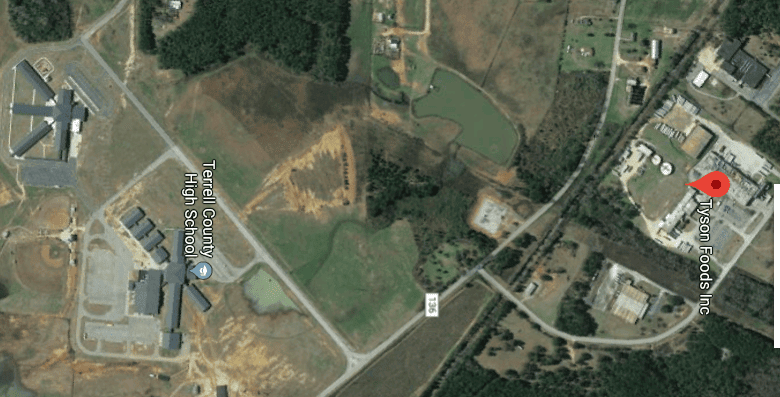Every time I see a story like this I find my stances on Ammonia and R-717 use shifting and shifting. If you were to ask me a few years back what I thought about Ammonia being used in refrigerant applications I would have said that I’m all for it. After all, it is one of the most energy efficient refrigerants out there. But now, as I have come across story after story about Ammonia leaking due to an accident, a fire, or poor maintenance my faith in the proper use of this has waned.
When Ammonia refrigerant does leak it is a big deal. It is not like an R-22 leak. Sure, with R-22 you’re releasing Chlorine into the atmosphere and potentially damaging the Ozone but no one around is in immediate danger. (As long as you are in a ventilated area.) Ammonia, or R-717, is toxic. That means if breathed in it can be deadly. The repercussions of mistakes or poor maintenance can affect a lot of people.
On April 18th, 2018 in the city of Dawson, Georgia there was yet another refrigerant Ammonia leak. This time it occurred at the Tyson Chicken processing plant. While it is difficult to find the exact specifics as to what happened what I have gathered is that somehow the Ammonia leaked and ignited not only causing it to be air born but also causing a fire. Firefighters were able to contain the fire and the leak. The Tyson plant is shutdown all of this week and some of next while the cause can be investigated and the damage can be repaired.
In this instance luckily, there were no fatalities or injuries were reported. However, just like with other Ammonia leaks many buildings were evacuated and nearby schools didn’t even hold classes on the 19th due to precautions. I’m always puzzled how this happens. How are their schools this close to an industrial plant? Take a look at the picture below to see just how close they are. Who is in charge of city planning there? One of these buildings had to come first.

Ammonia Leaks in the Past Six Months
As I mentioned above my confidence in Ammonia refrigeration has lessened as of late. My concern is not about the performance or cost of R-717 but over the safety to those working at the facilities and those living around them. Let’s take a quick look at some of the Ammonia refrigerant events that have happened within just the past six months. I’m sure this isn’t all of them but this should give us an idea of the actual danger that comes with using Ammonia.
- Last fall in a small town in British Columbia, Canada an Ammonia leak occurred at a local Ice Rink. This leak did not go well and at the end of it there were three fatalities. Since this happened there has been a lot of pressure and oversight on Ammonia refrigeration systems. Inspections have stepped up and some business owners have begun looking at alternative refrigerants so that they can move away from R-717. This story was covered on our site as well.
- Another incident that occurred less than a month ago was at a meat processing plant in South Carolina. In this example there were no injuries or fatalities but nearby citizens were awoken by police alerts at two in the morning. Not a fun way to wake up.
Conclusion
I’ve said it before in other articles and I’ll say it again here folks. I believe we need to stop using hazardous or toxic refrigerants such as R-717. Yes, I know that it is one of the most energy efficient refrigerants out there but let me ask you is it really worth it? Or, should we begin moving towards alternative refrigerants that are still climate friendly but that do not have the risk that comes with toxic refrigerants such as Ammonia. If the argument is climate over safety then I’m going to side with safety.